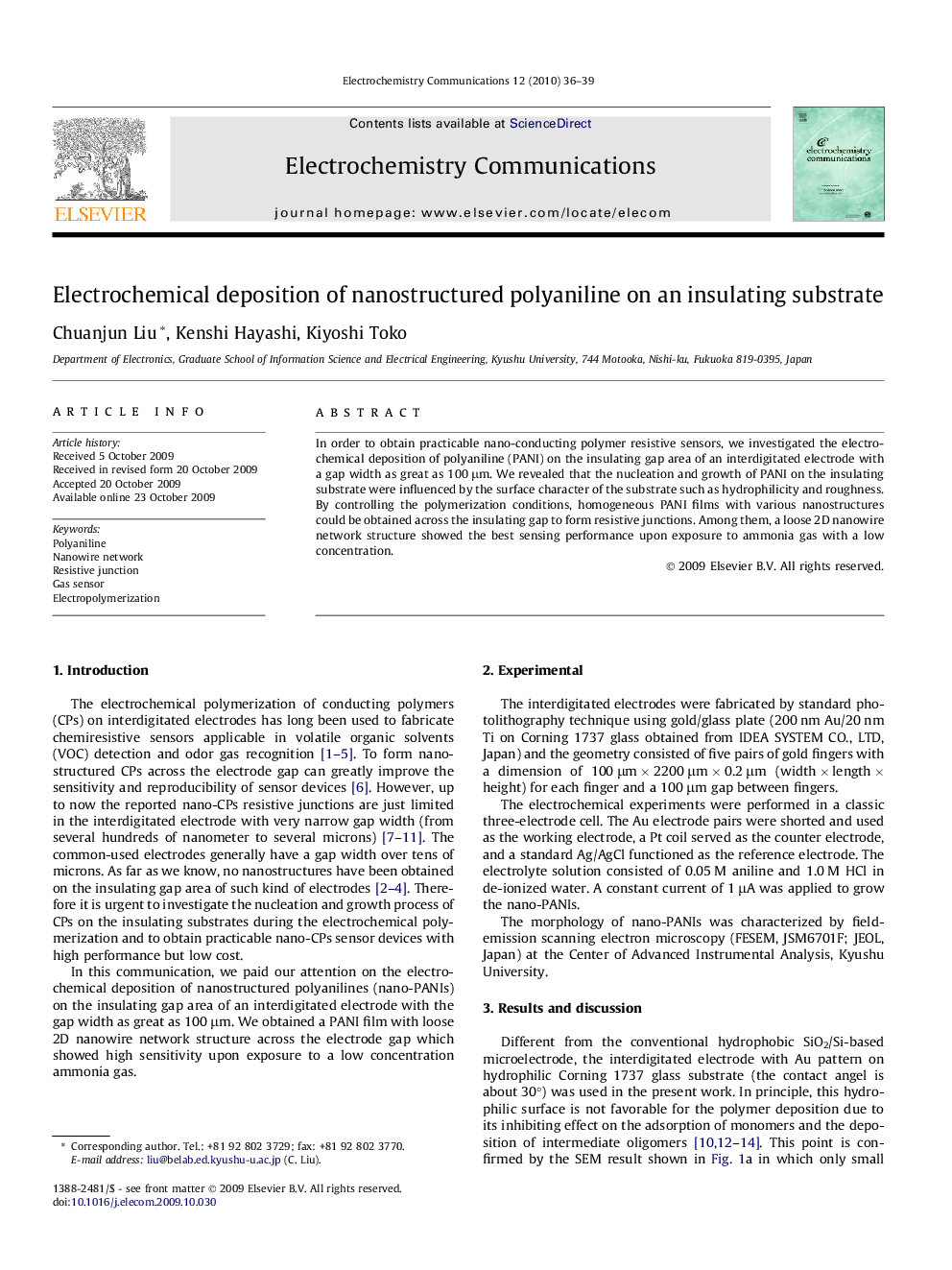| Article ID | Journal | Published Year | Pages | File Type |
|---|---|---|---|---|
| 180922 | Electrochemistry Communications | 2010 | 4 Pages |
Abstract
In order to obtain practicable nano-conducting polymer resistive sensors, we investigated the electrochemical deposition of polyaniline (PANI) on the insulating gap area of an interdigitated electrode with a gap width as great as 100 μm. We revealed that the nucleation and growth of PANI on the insulating substrate were influenced by the surface character of the substrate such as hydrophilicity and roughness. By controlling the polymerization conditions, homogeneous PANI films with various nanostructures could be obtained across the insulating gap to form resistive junctions. Among them, a loose 2D nanowire network structure showed the best sensing performance upon exposure to ammonia gas with a low concentration.
Related Topics
Physical Sciences and Engineering
Chemical Engineering
Chemical Engineering (General)
Authors
Chuanjun Liu, Kenshi Hayashi, Kiyoshi Toko,
